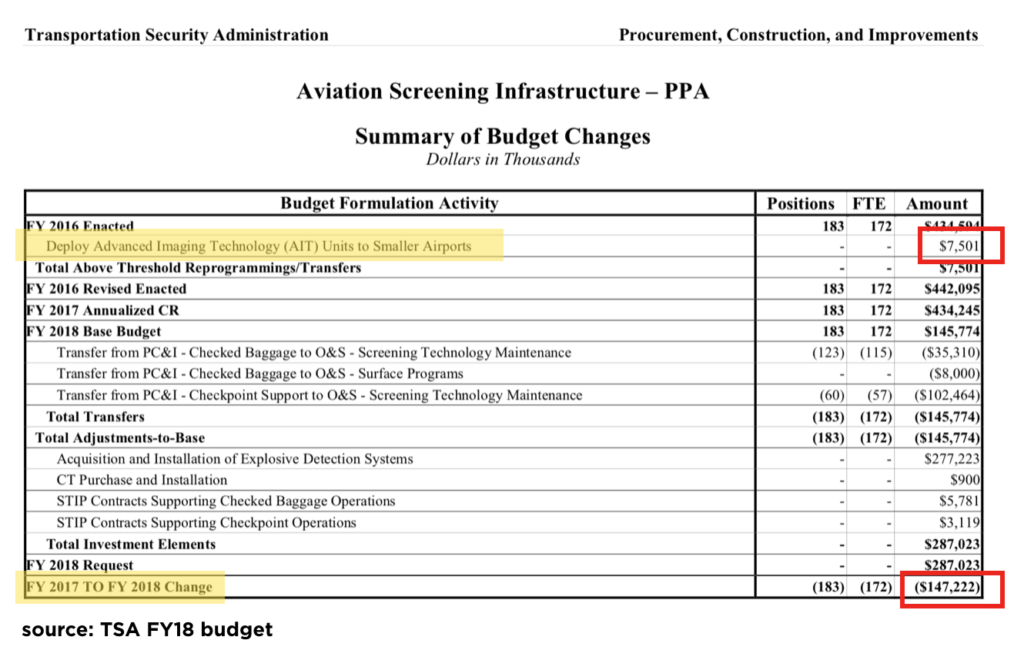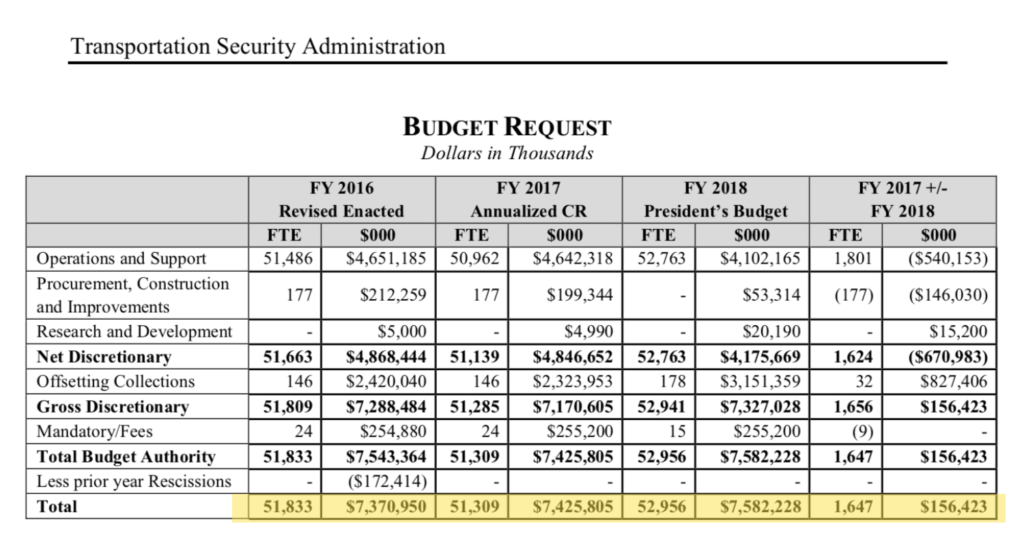The leaked plan to cut TSA screening from smaller airports got the attention of frequent travelers urban and rural alike today. While the TSA would save $115 million by cutting screening at some of the nation’s smallest airports – those served by aircraft with fewer than 60 seats – the chances of this happening appear slim based on precedent.
If it feels like we’ve heard something like this before, it’s because we have.
Back in 2016, Congress got wind of a similar proposal, per Politico. Representative Greg Walden (R – Oregon) learned of the potential impact to his district and lobbied other members of Congress to squash the proposal before details even emerged.
The TSA plan prompted a lot of commotion for $115 million in a $7.5 billion budget.
In 2016, TSA spent roughly $7.5 million on deploying Advanced Imaging Technology (AIT) units – also known as body scanners – to smaller airports. In the grand scheme, that’s small peanuts in TSA’s $7B+ annual budget.
That was in 2016, but for 2018’s budget, a similar expansion of the AIT units would cost just over $20 million – or about 209 FTP (full-time positions).

TSA FY18 Budget. Source: DHS / TSA

TSA budget request and year-over-year comparison. Source: TSA FY18 budget.
The chances of this actually happening? Pretty close to zero.
Cutting TSA screening checkpoints is widely unpopular with rural members of Congress on both sides of the aisle. Nine members of Congress – seven Republicans and two Democrats – cosponsored H.R.4549, titled “Treating Small Airports with Fairness Act of 2016.”
This bill states TSA must:
Conduct and provide all necessary staff and equipment for, security screening at any airport that lost commercial air service on or after January 1, 2013, if the airport operator submits: (1) a request for the TSA to conduct such screening, and (2) written confirmation of a commitment from a commercial air carrier that it intends to resume service at the airport within one year.
In other words, TSA must provide screening to small airports. The bill passed the House but not the Senate. Perhaps there will be a revival?
The responses below are not provided or commissioned by the bank advertiser. Responses have not been reviewed, approved or otherwise endorsed by the bank advertiser. It is not the bank advertiser's responsibility to ensure all posts and/or questions are answered.